

Berlin grew out of the historical city centre, the Nikolai quarter and its adjacent town of Cölln, both situated along the River Spree. It expanded its territories with areas such as Dorotheenstadt and Friedrichstadt. The creation of Greater Berlin in 1920 incorporated many former independent towns and municipalities such as Spandau, Charlottenburg and Köpenick.
Today, the urban environment of the metropolis also spreads to parts of Brandenburg and Potsdam. The decentralised development has resulted in a plethora of sights in Berlin – not just in the centre of the city, but also in the outlying boroughs. For various reasons among the world's most recognized symbols of Berlin are the Brandenburg Gate and its tallest landmark, the Berlin TV tower in Mitte.
Skyline
 View from Siegessäule
View from Siegessäule View from Berliner Dom
View from Berliner Dom.jpg.webp) View from Leipziger Platz
View from Leipziger Platz View from Reinickendorf
View from Reinickendorf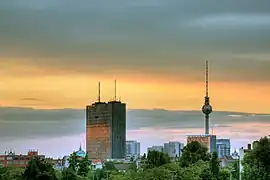 View from Kreuzberg
View from Kreuzberg View from Siegessäule (West)
View from Siegessäule (West) View from Treptower
View from Treptower View from Drachenberg
View from Drachenberg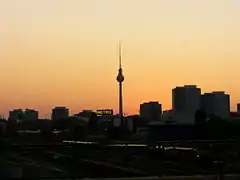 View from Warschauer Brücke
View from Warschauer Brücke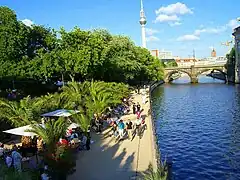 View from River Spree site in Mitte
View from River Spree site in Mitte
World Heritage Sites
.jpg.webp)
 Alte Nationalgalerie
Alte Nationalgalerie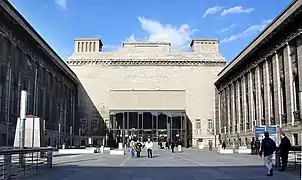
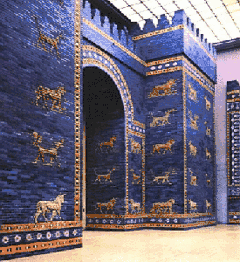
_(25353729997).jpg.webp)


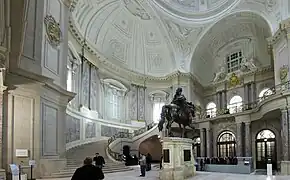 Bode Museum Lobby
Bode Museum Lobby
 Statue at Altes Museum
Statue at Altes Museum Beach at Museum Island
Beach at Museum Island White City (1931)
White City (1931)
 Schillerpark Estate (1930)
Schillerpark Estate (1930)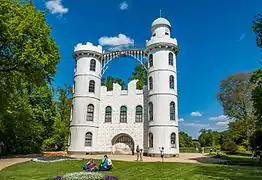
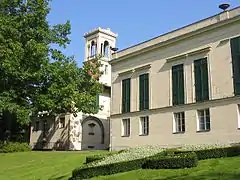
Capital buildings
 Rotes Rathaus (City Hall) and Neptune Fountain
Rotes Rathaus (City Hall) and Neptune Fountain Abgeordnetenhaus (City parliament)
Abgeordnetenhaus (City parliament) Abgeordnetenhaus (Interior)
Abgeordnetenhaus (Interior) Bellevue Palace (Seat of German President)
Bellevue Palace (Seat of German President)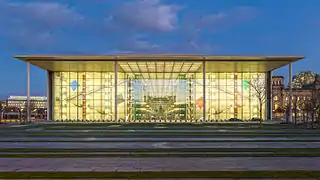 Paul Löbe Haus
Paul Löbe Haus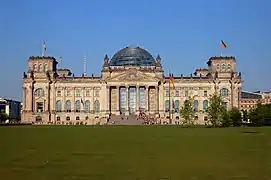 Reichstag building (German parliament)
Reichstag building (German parliament) Reichstag dome (inside)
Reichstag dome (inside)_-_panoramio_(1).jpg.webp) Bundeskanzleramt German Chancellery
Bundeskanzleramt German Chancellery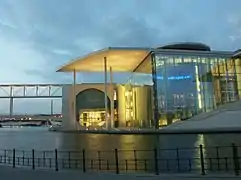 Marie-Elisabeth-Lüders-Haus
Marie-Elisabeth-Lüders-Haus Dutch Embassy
Dutch Embassy

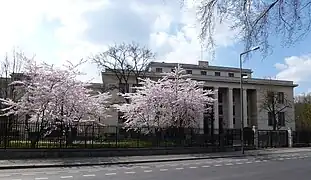 Japanese Embassy
Japanese Embassy Mexican Embassy
Mexican Embassy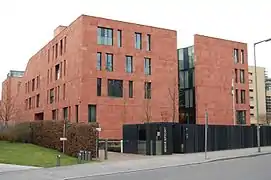 Indian Embassy
Indian Embassy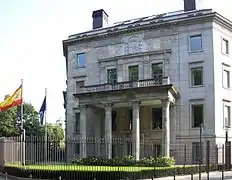 Spanish Embassy
Spanish Embassy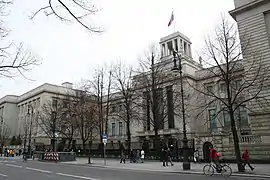 Russian Embassy
Russian Embassy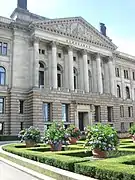
Religious buildings
.jpg.webp) Berlin Cathedral (Dom)
Berlin Cathedral (Dom)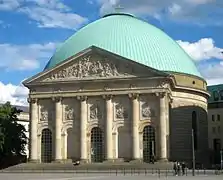

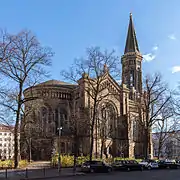 Zionskirche
Zionskirche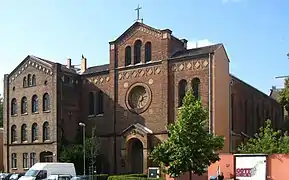 Evangelisch-Lutherische Kirche
Evangelisch-Lutherische Kirche Parochialkirche, Mitte
Parochialkirche, Mitte Saint Matthew's Church
Saint Matthew's Church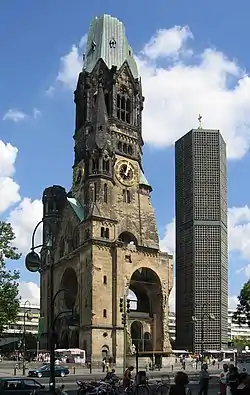
 St.-Thomas-Kirche, Kreuzberg
St.-Thomas-Kirche, Kreuzberg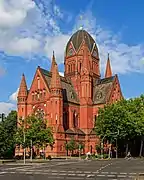 Heilig-Kreuz-Kirche, Kreuzberg
Heilig-Kreuz-Kirche, Kreuzberg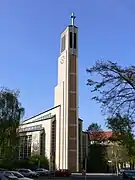 Gustav Adolf Kirche, Charlottenburg
Gustav Adolf Kirche, Charlottenburg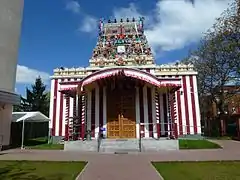 Sri-Mayurapathy-Murugan Temple
Sri-Mayurapathy-Murugan Temple
Neighbourhoods
.jpg.webp)
 Winterfeldtplatz, Schöneberg
Winterfeldtplatz, Schöneberg
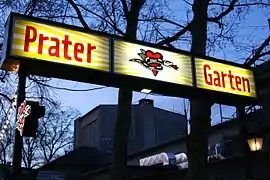 Prater in Prenzlauer Berg
Prater in Prenzlauer Berg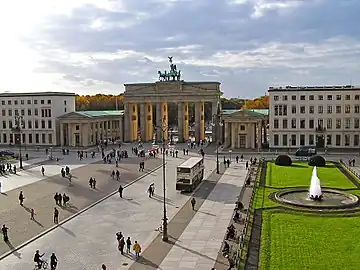 Pariser Platz with Brandenburg Gate
Pariser Platz with Brandenburg Gate
 Karl-Marx-Allee, monumental boulevard
Karl-Marx-Allee, monumental boulevard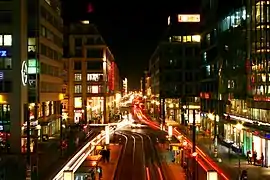 Friedrichstraße, shopping boulevard
Friedrichstraße, shopping boulevard Bölschestraße in Friedrichshagen
Bölschestraße in Friedrichshagen
 Asian market in Wilmersdorf
Asian market in Wilmersdorf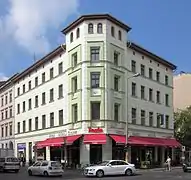 Oranienstraße in Kreuzberg
Oranienstraße in Kreuzberg Lido stage, Kreuzberg
Lido stage, Kreuzberg Mexikoplatz, Zehlendorf
Mexikoplatz, Zehlendorf Unter den Linden at Christmas
Unter den Linden at Christmas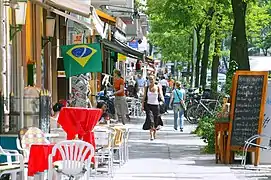 Akazienstraße in Schöneberg
Akazienstraße in Schöneberg Stadtbad Neukölln
Stadtbad Neukölln
Parks
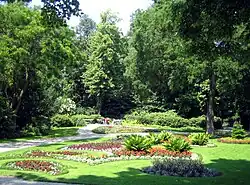 Luiseninsel at Tiergarten
Luiseninsel at Tiergarten.jpg.webp) Entrance to Berlin Zoo
Entrance to Berlin Zoo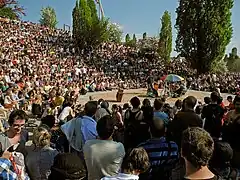 Karaoke at Mauerpark
Karaoke at Mauerpark Tropical House at the Botanical Gardens
Tropical House at the Botanical Gardens_(6336744671).jpg.webp)



.jpg.webp)
 Schlosspark Schoenhausen
Schlosspark Schoenhausen
 Gardens of the world, Marzahn
Gardens of the world, Marzahn
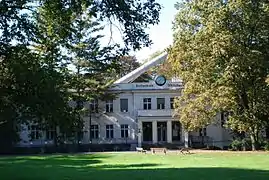
_(6335933400).jpg.webp)

 Children's playground at Ernst-Thälmann-Park
Children's playground at Ernst-Thälmann-Park
Monuments


 East Side Gallery (former Berlin Wall)
East Side Gallery (former Berlin Wall).jpg.webp)
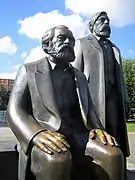
 Marx-Engels monument
Marx-Engels monument Soviet War Memorial, Tiergarten
Soviet War Memorial, Tiergarten_(3).jpg.webp) Statue and Bell Tower at Olympiastadion
Statue and Bell Tower at Olympiastadion



 LEGO Giraffe at Sony Center
LEGO Giraffe at Sony Center Villa Wannsee Conference
Villa Wannsee Conference Statue of Martin Luther
Statue of Martin Luther Airlift Monument
Airlift Monument



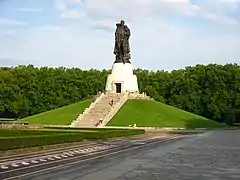 Soviet Cenotaph, Treptow
Soviet Cenotaph, Treptow
 Dragon at Moltke Bridge
Dragon at Moltke Bridge World Clock on Alexanderplatz
World Clock on Alexanderplatz
Museums



.jpg.webp)



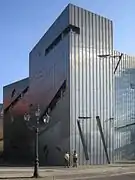


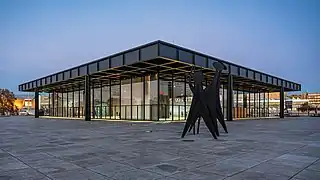


_-_geo-en.hlipp.de_-_13808.jpg.webp)

 Museum für Kommunikation
Museum für Kommunikation




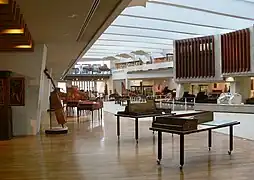
 Automobile at VW Forum
Automobile at VW Forum Computerspielemuseum
Computerspielemuseum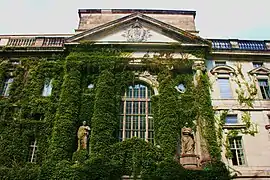 Staatsbibliothek
Staatsbibliothek
Entertainment venues
 Inside the Sony Center
Inside the Sony Center_(2).jpg.webp)

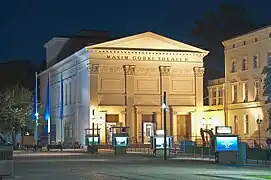
 Berghain club
Berghain club

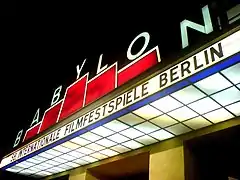 Babylon Cinema
Babylon Cinema
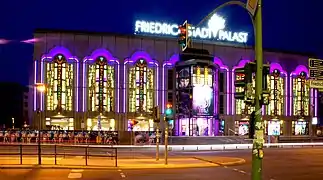

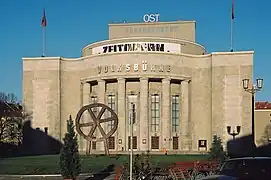
 Madame Tussauds in Berlin
Madame Tussauds in Berlin Admiralspalast
Admiralspalast
 Tempodrom (and Liquidrom)
Tempodrom (and Liquidrom)
 Kino International
Kino International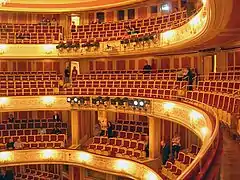 Inside Berlin State Opera
Inside Berlin State Opera Schaubühne in Charlottenburg
Schaubühne in Charlottenburg Markthalle 9 (Street Food)
Markthalle 9 (Street Food)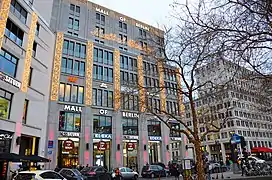 Shopping Center LP12 Mall of Berlin
Shopping Center LP12 Mall of Berlin
Notable buildings

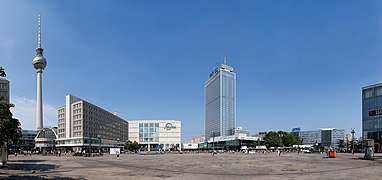
.jpg.webp) Quartier 207 - Galeries Lafayette
Quartier 207 - Galeries Lafayette GSW Building
GSW Building
 Badeschiff
Badeschiff Axel Springer headquarter
Axel Springer headquarter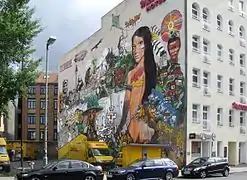 Urban mural
Urban mural
_(6286824425).jpg.webp) Shellhaus
Shellhaus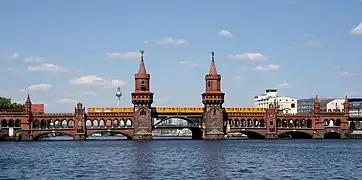
 Krematorium Berlin-Baumschulenweg
Krematorium Berlin-Baumschulenweg.jpg.webp) The Kaufhaus des Westens department store
The Kaufhaus des Westens department store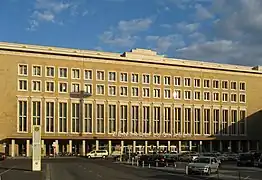 Main building of former Tempelhof Airport
Main building of former Tempelhof Airport



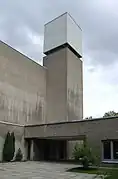 Former St. Agnes Church
Former St. Agnes Church.jpg.webp)
 Borsigturm
Borsigturm

 Hotel Concorde
Hotel Concorde
.jpg.webp) Cosmonaut Streetart in Kreuzberg
Cosmonaut Streetart in Kreuzberg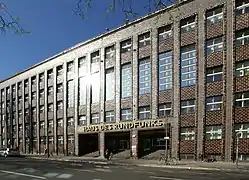 Haus des Rundfunks
Haus des Rundfunks
Happenings
 Christmas Carols (Union Berlin)
Christmas Carols (Union Berlin)





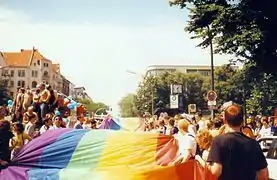
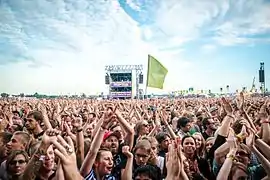
See also
- St. Nicholas' Church
- St. Mary's Church
- Palaces and Parks of Potsdam and Berlin
- Historic cemeteries in Berlin
- Berlin Memorial Plaques
- Alte Kommandantur
- Berlin State Library
- The Kennedys Museum
- Akademie der Künste
- Remnants of the old city wall of Berlin-Cölln
- Philological Library - Free University of Berlin
